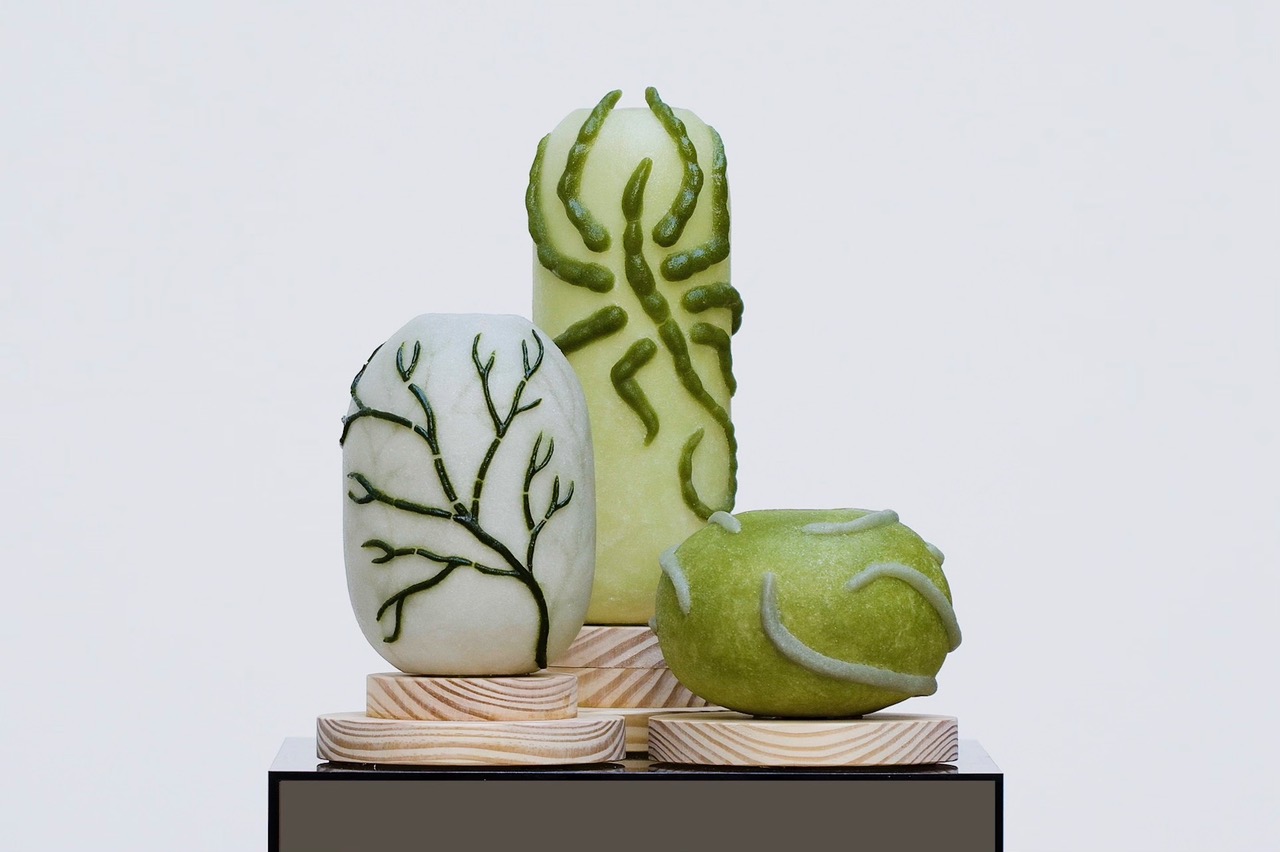
Julie Light is an artist primarily working with glass, though she has also worked with other materials such as metal, latex and found objects. Julie took pottery classes in her younger years, but then worked in the corporate world until she was in her late 40s, when she decided she wanted to find a creative outlet. She learned to cast glass on some short courses and soon she was asked to participate in exhibitions and started selling her work. She took the step of buying her own kiln and finding a studio almost immediately after she started glass casting, which meant she could experiment and develop her own work. After extending her skills through attending evening classes, she took the leap and left her corporate job to focus on her art, and then started a postgraduate degree in Art and Science at Central Saint Martins, which hugely influenced her practice. After graduating, Julie was splitting her time between freelance work and making art, but she explained that now her time is mainly spent on making artwork. She likes to experiment with a range of glass techniques involving kiln-forming the glass. She mainly casts glass using moulds, and her recent work focuses on pâte de verre, a process that involves making a paste using crushed glass which is then applied to a mould. When asked why she likes working with glass, she described how it’s such a versatile material - you can get a range of different textures and finishes as well as colours. She also likes that there’s a whole world of possibilities of things you can make with moulds, so you can obtain a wide range of forms. The transparency of glass means that you can add details on the inside of the piece as well as the outside and build layers of texture, texture being something that Julie is especially interested in. Glass casting usually starts off with making a model out of clay or wax, and a mould is then created from the model. For glass casting the mould is usually made from a combination of plaster with quartz, flint or silica- the plaster forms the shape, and the other element provides the strength and ability to withstand heat. Once the mould has been made, a reservoir is built which leads to the mould, so once the glass melts in the kiln, it can fall from the reservoir into the mould. Once the glass has filled the mould, the temperature is slowly brought down, sometimes over days (or weeks if the piece is larger,) so that the glass doesn’t shatter or crack. The time-consuming nature of this process can make it hard for glass artists to work on multiple pieces at one time unless they have access to multiple kilns. Thematically, Julie has a keen interest in science, particularly the body, health, and medicine. Collaboration is a key part of her practice and she has recently worked on a projects with AstraZeneca, the University of Leeds and St James’ Hospital, Leeds, as well as with The Royal Society. Julie normally works on projects to create bodies of work and she’s currently working on a collection called the ‘Marine Museum of Lost Potential’, for which she is collaborating with a scientist from the National Oceanography Centre, to produce her own fictional museum of deep-sea creatures. She was inspired to start this series after hearing her collaborator talking about research on species that might become affected by deep-ocean mining. Her collaborator is also involved in a project about the potential for discovery of new medical compounds from the deep sea, which has further inspired Julie’s work. Along with working on her collaborative projects, Julie’s work has been exhibited across the UK and internationally and can be found in a number of public and private collections. Her work has been shown at the British Glass Biennale and will be exhibited later this year at the International Glass Biennale in Bulgaria. Julie explains that in recent years, many courses and workshops for glass casting and other glass-making techniques have closed or ceased to exist, and there are few facilities available for artists working with glass. Kilns are expensive to buy and use, and not everyone is able to accommodate a kiln at home or in their studio. This makes the future of the art form uncertain. However, despite this, artists such as Julie are carrying the legacy of the medium forward and inspiring others to do the same.
New Educational Approaches for IT and Entrepreneurial Literacy of Senior Artisans

PROJECT:
2020-1-RO01-KA204-080350
New Educational Approaches for IT and Entrepreneurial Literacy of Senior Artisans

PROJECT:
2020-1-RO01-KA204-080350
The European Commission's support for the production of this publication does not constitute an endorsement of the contents, which reflect the views only of the authors, and the Commission cannot be held responsible for any use which may be made of the information contained therein.